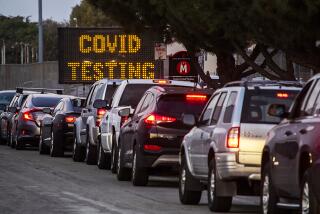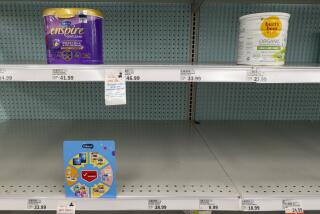Pump up safety
Lower trade barriers, a weakening dollar and a seemingly insatiable demand for ever-cheaper products have helped to more than double the volume of goods imported into the U.S. in the last decade. The federal agency in charge of product safety, however, has gone in the other direction. In the fiscal year that began Oct. 1, it was slated to have a little over 400 employees -- less than half its size in its early days in the 1970s.
If anything, the Consumer Product Safety Commission should be more active today than it was three decades ago. As the U.S. market becomes increasingly open and manufacturing increasingly outsourced, it’s more important than ever to enforce U.S. safety standards on the goods sold here -- particularly those for children. Otherwise, foreign regulators will be left to decide how safe those products should be. We’ve seen how that approach has been working with Chinese toy manufacturers, and it’s as scary as a trick-or-treat bucket decorated with lead paint.
The gap between the commission’s mission and its capabilities has become so wide that even the retailers and manufacturers it regulates have called for Washington to beef up the agency. Deaths and injuries caused by unsafe products are bad for business, after all, and recalls aren’t cheap. Nevertheless, a Senate bill to give the commission more money, manpower and authority has drawn fire from the White House and industry trade groups. In particular, they oppose provisions that would increase the maximum penalty for safety violations to $100 million, provide sizable rewards to corporate whistle-blowers and authorize more lawsuits.
Those issues may be worth debating, but they’re not the heart of the matter. The most important thing Congress can do is to bring more products into compliance with federal and industry safety standards before they hit the market. That requires more resources for the commission and an expanded regime of independent testing. While they’re at it, lawmakers should speed the disclosure of known safety hazards and stop giving companies what amounts to a free pass on their first violation of the law.
Some defenders of the commission point to the number of recalls as proof that the system is working. But recalls are much more effective at pulling risky products off the shelves than at removing them from homes after they’ve been purchased. That’s why testing and certifying products before they’re sold is so important. The recall of more than 900,000 lead-tainted toys and Halloween items over the last two months isn’t a cause for celebration, it’s a call to action.
More to Read
Inside the business of entertainment
The Wide Shot brings you news, analysis and insights on everything from streaming wars to production — and what it all means for the future.
You may occasionally receive promotional content from the Los Angeles Times.










